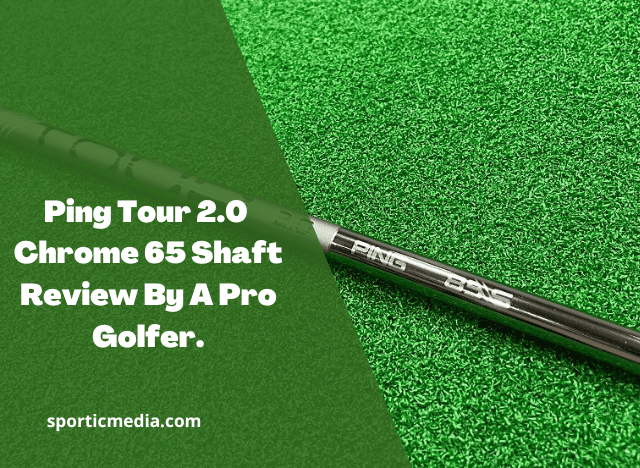Golf swing speed is a critical factor in determining how far and accurately you can hit the ball. Knowing your swing speed can help you select the right equipment, improve your technique, and ultimately enhance your performance on the course.
In this article, we’ll explore various methods to measure swing speed, explain how the technology works, and offer tips for getting the most accurate readings.
Why Measure Swing Speed?
Understanding your swing speed is beneficial for several reasons:
- Equipment Selection: Different clubs are suited for different swing speeds. For instance, a higher swing speed may require a stiffer shaft.
- Performance Improvement: Knowing your swing speed helps you identify areas for improvement and track progress over time.
- Customization: Tailoring your equipment and technique based on swing speed can lead to more consistent and powerful shots.
Methods to Measure Swing Speed
There are several ways to measure swing speed, ranging from high-tech devices to simpler, more accessible tools.
1. Launch Monitors
Launch monitors are highly accurate devices that measure various aspects of a golf swing, including swing speed. They use radar or camera technology to track the club and ball through impact.
- How to Use: Position the launch monitor according to the manufacturer’s instructions, usually behind or beside the golfer. Swing as you normally would, and the device will display the swing speed along with other data points like ball speed, launch angle, and spin rate.
- Popular Models: TrackMan, FlightScope, and Foresight Sports.
2. Swing Speed Radars
Swing speed radars are portable, easy-to-use devices that focus solely on measuring the speed of the clubhead.
- How to Use: Place the radar device on the ground near the tee or hitting area. Swing normally, and the radar will show the swing speed on its display.
- Popular Models: Sports Sensors Swing Speed Radar, PRGR Black Pocket Launch Monitor.
3. High-Speed Cameras
High-speed cameras can capture the golf swing in detail, allowing for precise measurement of swing speed and other aspects of the swing.
- How to Use: Set up the camera to record the swing, ideally from multiple angles. Use software to analyze the footage and calculate swing speed.
- Popular Options: GoPro, Sony RX10 IV.
4. Wearable Sensors
Wearable sensors, often integrated into gloves or attached to the club, provide real-time data on swing speed and other metrics.
- How to Use: Attach the sensor as directed, typically to the glove or the club’s shaft. Swing as usual, and the sensor will transmit data to a connected app or device.
- Popular Models: Arccos Caddie Smart Sensors, Zepp Golf 2 3D Swing Analyzer.
Tips for Accurate Measurements
To ensure you get the most accurate swing speed readings, consider the following tips:
- Calibrate Equipment: Make sure your measuring device is properly calibrated and positioned according to the manufacturer’s guidelines.
- Consistent Setup: Maintain a consistent setup for each swing, including stance, grip, and swing mechanics.
- Multiple Swings: Take multiple swings and calculate the average speed to account for any variations or anomalies.
- Environment: Conduct measurements in a controlled environment, free from wind or other factors that could affect the readings.
Conclusion
Measuring your golf swing speed is a straightforward process with the right equipment. Whether you opt for a high-tech launch monitor, a simple swing speed radar, high-speed cameras, or wearable sensors, understanding your swing speed can provide valuable insights into your game. By using these tools and following best practices, you can make informed decisions about your equipment, track your progress, and ultimately improve your performance on the course.
FAQs About Measuring Swing Speed in Golf
1. Can I measure swing speed without any special equipment?
While specialized equipment provides the most accurate measurements, you can estimate your swing speed using a stopwatch and distance measurements. However, this method is far less precise and is not recommended for serious analysis.
2. What factors can affect my swing speed readings?
Several factors can influence swing speed readings, including wind conditions, the type of ball used, the condition of the club, and even the golfer’s physical condition on the day of measurement.
3. How often should I measure my swing speed?
It’s a good idea to measure your swing speed regularly, especially if you’re making changes to your technique or equipment. Monthly or quarterly measurements can help track progress and make informed adjustments.
4. Is swing speed the same for all types of golf clubs?
No, swing speed varies depending on the type of club. Drivers typically have higher swing speeds compared to irons or wedges due to their longer shafts and design intended for distance.
5. Can swing speed vary during a round of golf?
Yes, swing speed can fluctuate during a round due to factors like fatigue, stress, or changes in technique. It’s important to measure swing speed under consistent conditions for the most accurate comparisons.
6. How does swing speed correlate with ball speed?
Swing speed directly affects ball speed, but other factors like the quality of contact, clubface angle, and ball type also play significant roles. Generally, a higher swing speed results in higher ball speed.
7. Can improving my fitness level increase my swing speed?
Yes, improving overall fitness, particularly strength, flexibility, and core stability, can positively impact your swing speed. Regular exercise and targeted golf fitness programs can help increase your swing speed and overall performance.
Discover the meticulous and expert-driven process behind our product reviews at Sportic Media. Our comprehensive guide, led by industry veterans, ensures you get the most reliable and detailed insights into golf equipment. Dive into our methodical approach by visiting How We Test Products at Sportic Media: A Comprehensive Guide
.







